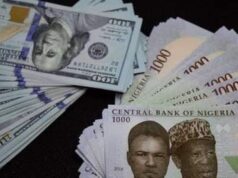(Bloomberg) Goldman Sachs to clients: whoops. Just six weeks into 2016, the New York-based bank has abandoned five of six recommended top trades for the year.
The dollar versus a basket of euro and yen; yields on Italian bonds versus their German counterparts; U.S. inflation expectations: Goldman Sachs Group Inc. was wrong on all that and more.
The fumbles underscore the volatility that has beset global markets, accelerating price swings across currencies, stocks and bonds. Signs the world economy is suffering amid a slowdown in China have fueled unease about the creditworthiness of banks and other corporations, spurring a bid for haven assets such as the yen and the euro.
“Markets have started out this week by aggressively de-risking, apparently owing to fears that the recent slowdown in global growth could descend into recession,” Charles Himmelberg, chief credit strategist, wrote in a note to clients Tuesday. “Financial credit spreads are spiking, especially in Europe, possibly signaling a reactivation of systemic risk concerns.”
Neither Himmelberg nor Francesco Garzarelli, Goldman Sachs’s London-based co-head of fixed-income strategy, could immediately be reached for further comment, when contacted by phone and e-mail.
Calls Axed
The New York-based bank closed its call for dollar strength versus an equally weighted basket of the euro and yen on Tuesday, recording a potential loss of about 5 percent, Himmelberg wrote in his note. Goldman Sachs also ended a bet on five-year five-year forward Italian sovereign yields versus their German counterparts for a loss of about 0.5 percent, he wrote.
Japan’s currency strengthened past 115 per dollar for the first time since 2014 on Tuesday while the euro rose to a more than three-month high. JPMorgan Chase & Co.’s gauge of global currency swings rose to 11.9 percent on Tuesday, its highest in more than two years. Measures of stock-market and bond volatility also climbed.
While that’s derailed Goldman’s trades, it hasn’t curbed its enthusiasm for their rationale. Increasingly divergent monetary policy in the U.S. versus the euro area and Japan “still favors dollar strength,” Himmelberg wrote. Further easing in Europe is also “conducive to a more positive backdrop for peripheral sovereign bonds.”
Goldman Sachs was forced out of three of its top picks for the year last month: a bet on large U.S. banks against the Standard & Poor’s 500 Index, a wager on 10-year break-evens, and a call on the Mexican peso and Russian ruble strengthening versus the South African rand and Chilean peso. The latter closed on Jan. 21 for a potential loss of 6.6 percent.
The bank’s one remaining trade is a wager on a basket of 48 non-commodity exporting companies versus a basket of 50 emerging-market bank stocks. That’s trading 4.5 percent above its opening level in November.
Subscribe
Login
0 Comments
Oldest









